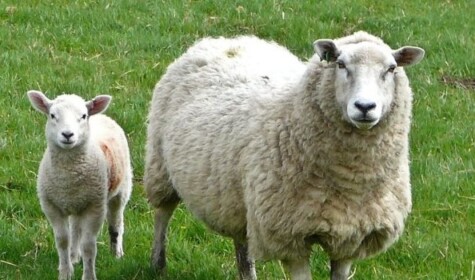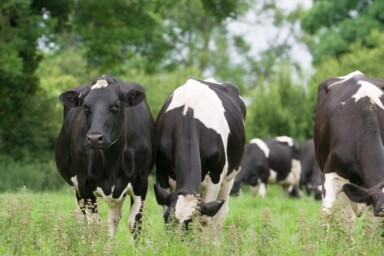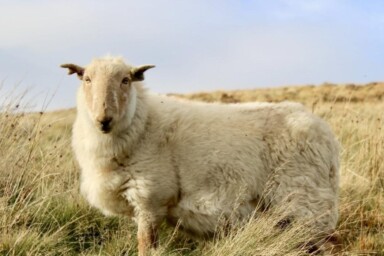The two nations have long shared an intimate trading relationship, particularly around wool and sheep meat, with the very first shipment of frozen sheep meat departing New Zealand waters in February of 1882. This experimental voyage organised by the British-based manager of the New Zealand and Australian Land Company, had a huge impact on New Zealand as a primary produce exporter, advancing the trade in frozen meat and dairy products that has gone on to become the cornerstone of New Zealand’s modern economy.
The tide has slowly begun to shift however, with Morrisons the first to adopt a 100% British lamb policy in 2017 and Waitrose also recently announcing that it will pull New Zealand lamb from its fridges and freezers starting in 2021, stating that it wishes to ‘invest in the future of British agriculture’. But, is it that they want to support British farmers, or are they, rather, struggling for supply? The disruption in the flow of goods from Europe during the Brexit trade negotiations could also encourage a further domestication of the supermarket supply chain.
This could open up opportunities for UK farmers to capitalise on producing for the shoulders of the season – winter and spring – perhaps offering a premium as the supply of lamb from NZ declines and demand holds. Producing out of season may be a challenge for UK farmers due to the nature of the local breeds, however some breeds, such as the Dorset, do have the ability to breed year-round.
It is positive to note that British consumers do wish to see more home-grown produce on shop shelves, however they are still very price sensitive. Findings from an AHDB consumer research paper released in 2018 showed that although 78% of UK shoppers agreed that ‘Britain needs to be more self-sufficient in food and not rely on imports as much’, 72% went on to agree that they ‘would buy more British food if it was better value for money.’ From this statistic, it appears consumers are under the impression that imported foods are less expensive.
The case for self-sufficiency
Perhaps then, this presents an opportunity for UK farmers to exploit the slack in the domestic market resulting from the decline in NZ imports. This raises the question of whether levy body AHDB should be encouraging more self-sufficiency, funnelling some of their £19 million marketing and export development spend into domestic marketing?
Will this reduction in demand affect New Zealand farmers? Speaking with those working within the meat industry in NZ, it is apparent that the UK market is beginning to lose its appeal, with mentions of difficult pricing negotiations due to pressure from local suppliers and challenging specification requirements from the multiple retailers. Couple this with the additional challenges around product shelf-life and you can see why China has such good appeal.
New Zealand lamb exports to the UK have dramatically declined recently, with a reduction of over 10,000 tons (a drop of more than 20%) between 2017/18 and 2018/19, this is coupled with slight declines in two of UK’s largest European markets for lamb, France and Germany. The focus now for NZ is the protein powerhouse of China, with exports to this region growing in volume from 114,000 tonnes to over 125,000 tonnes within the same period. This increase comes off the back of the African Swine Flu epidemic, which may see a quarter of the global pig population die as a result, according to Mark Schipp, President of the World Organisation for Animal Health (OIE).
Chinese consumers are actively seeking out alternative protein sources, and with less trust in the domestic market in China, affluent Chinese are turning to trusted export markets such as NZ and Australia, which seemingly provide consumers with far more confidence in the produce they are buying. The increasing demand for alternatives to pork in China, has been quickly capitalised on within NZ with approvals going ahead for substantial Chinese investment into processing. One of NZ’s largest processors, Silver Ferns Farms, originally established as a farmer-led sheep processing co-operative, sold a 50% stake to Shanghai Maling Aquarius Ltd, a China-based company primarily engaged in the production, processing and distribution of meat products.
Back of the envelope calculations show that with the reductions in New Zealand supply, UK farmers could potentially claw back 10-15% of the domestic market, especially if they were backed by multiple supermarket retailers and a campaign from AHDB. However, if the UK Government’s trade negotiations don’t go as planned with the EU, the UK could be faced with a glut of sheep meat – approximately 80,000 tonnes is currently exported to the EU annually. This could possibly be offset by the consequential reductions in imports due to tariffs placed on sheep meat coming into the UK and miraculously balance itself out. Currently the UK imports about as much sheep meat as it exports, with sheep meat imports from New Zealand entering the UK via the EU quota system as part of a European wide Free Trade Agreement.
Pass me my crystal ball
Does the rise in popularity of ‘grass-fed’ lamb into the US present an opportunity for the UK? Perhaps – but at what cost to the domestic market? President Trump himself has sampled the goods, dining on British ‘Saddle of Windsor Farcie Marigny Lamb’, served by none other than Her Majesty the Queen, although not personally, at the State Banquet back in June of 2019. Rather lovely indeed. Jokes aside, if the US trade deal is going to actively encourage the export of UK lamb to America, there is the potential that the US negotiators will want something in return. Will the trade-off come at a cost to other aspects of the UK agriculture industry? Will the Government allow a certain relaxation of some rules – GM springs to mind – in exchange for others? And will this then jeopardise further trade negotiations with the EU?
Atkins Ranch, along with a co-operative of leading New Zealand farmers and some very astute marketing, is capitalising on the strength of the burgeoning grass-fed market in the US. This group of 100 NZ farmers and the processor Progressive Meats is working directly with US retailer Whole Foods Market to produce and supply a superior, strictly grass-fed, hormone-, GM- and antibiotic-free lamb which is certified to Global Animal Partnership (GAP) Step 4 accreditation, a similar level of accreditation to the UK’s own Pasture for Life certification which guarantees a 100% pasture-based diet for the animal.
More recently Atkins Ranch has signed up to the Land to Market scheme on offer from the Savory Institute, a global accreditation with respect to regenerative farming practices, based on a verification of environmental outcomes (EOV) – quite appropriate, as regenerative agriculture was pipped by Whole Foods as the number one food trend for 2020. Not dissimilar to the Sectormentor app, Savory’s EOV takes a measure of ecosystem function indicators in order to establish the overall health of the land. The programme takes a real-world assessment of soil health and sequestered carbon, water infiltration rates and biodiversity. The two organisations announced their collaboration back in December of last year, with Atkins Ranch working as a ‘Frontier Founder’.
The UK’s own Pasture-Fed Livestock Association (PFLA) is working very hard to both encourage British farmers to move towards a more regenerative, pasture-based approach to production, as well as trying to encourage consumers to seek out and purchase meat produced by these certified farmers.
The battle continues for British farmers to defend themselves against the rising tirade of environmental focused discourse, which so wrongly lists extensive livestock farming as a leading cause of global warming, pulling statistics from worst-case US datasets and not accounting for or understanding the cycling effect of grassland photosynthesis. This cycle draws CO2 from the atmosphere converting it into plant biomass and root exudates, with a proportion released as the short-lived greenhouse gas, methane, produced via digestion, and a proportion sequestered deep into the soil leading to increases in soil organic matter. In reality pasture-based lamb production can be an extremely efficient way to produce quality protein if managed appropriately, and once science catches up, farmers will be able to prove what is already known anecdotally – that grasslands can operate as a carbon sink and farming operations can be a net carbon gain.
Read SFT’s article on US/UK trade negotiations here.
The full impact of coronavirus on New Zealand sheep meat exports to China is currently unknown, however within the last few weeks, New Zealand has seen meat exports decline by almost half. In the four weeks to the 2nd March, the value of meat exports to China reduced to $170 millon NZD, down significantly on the same period last year from close to $280 million NZD. This may have spill-over effects on the UK lamb market, particularly around the Easter period as NZ processors seek to off-load stockpiled meat at a discounted rate.
Photograph: Tim Green





